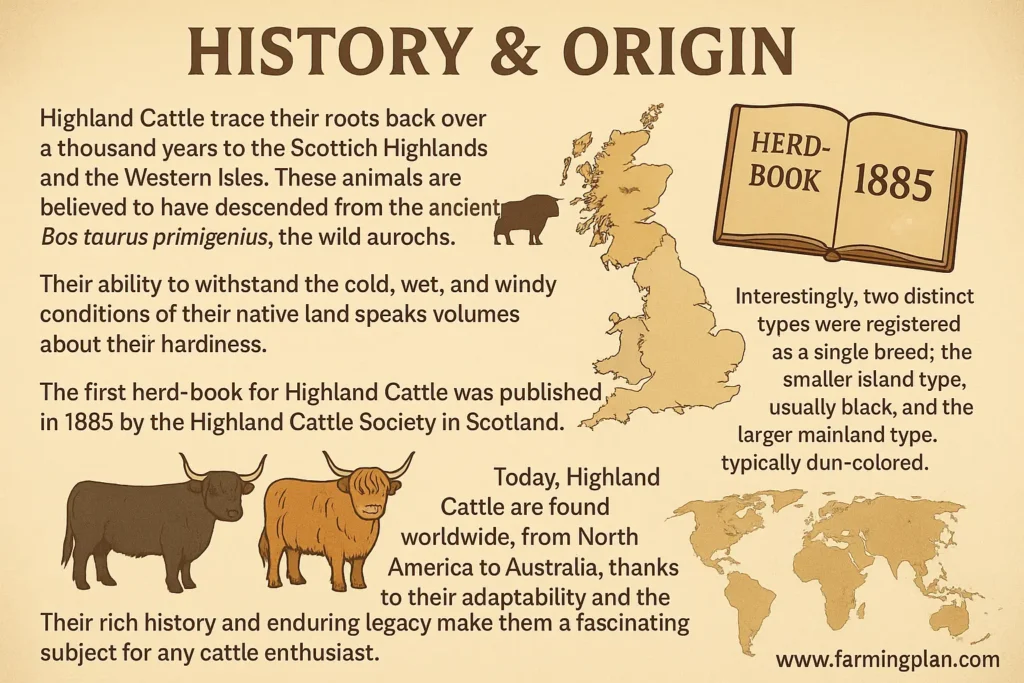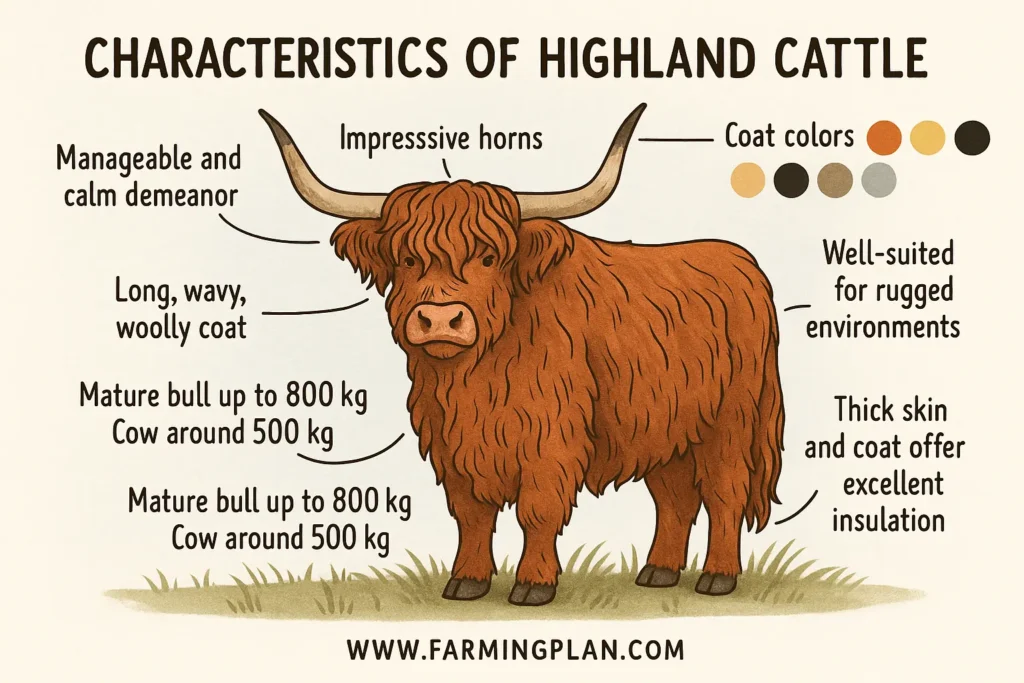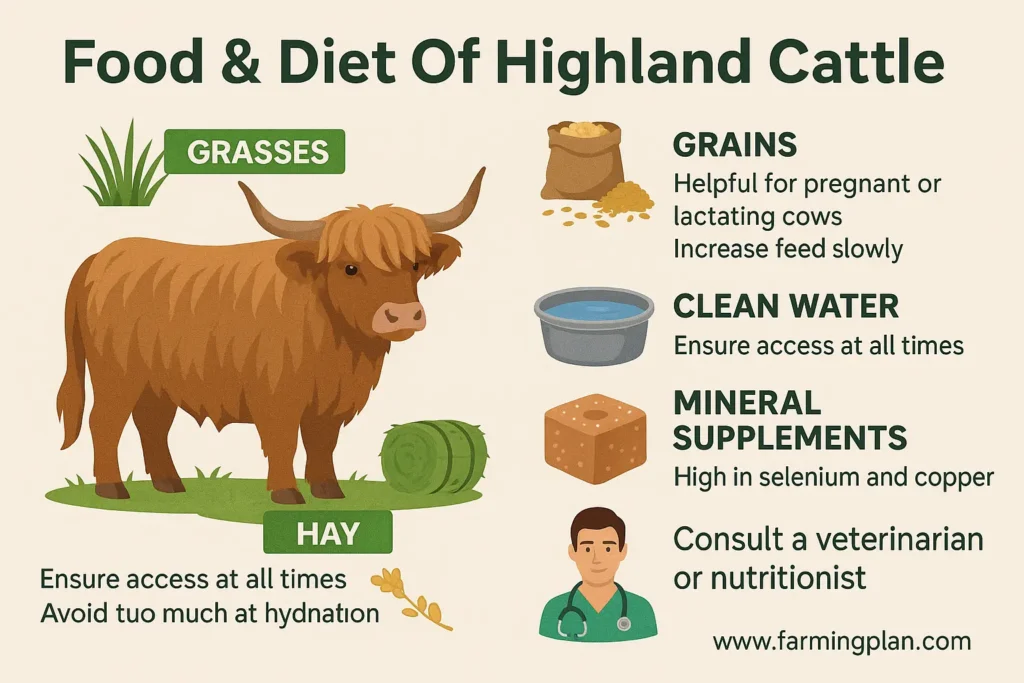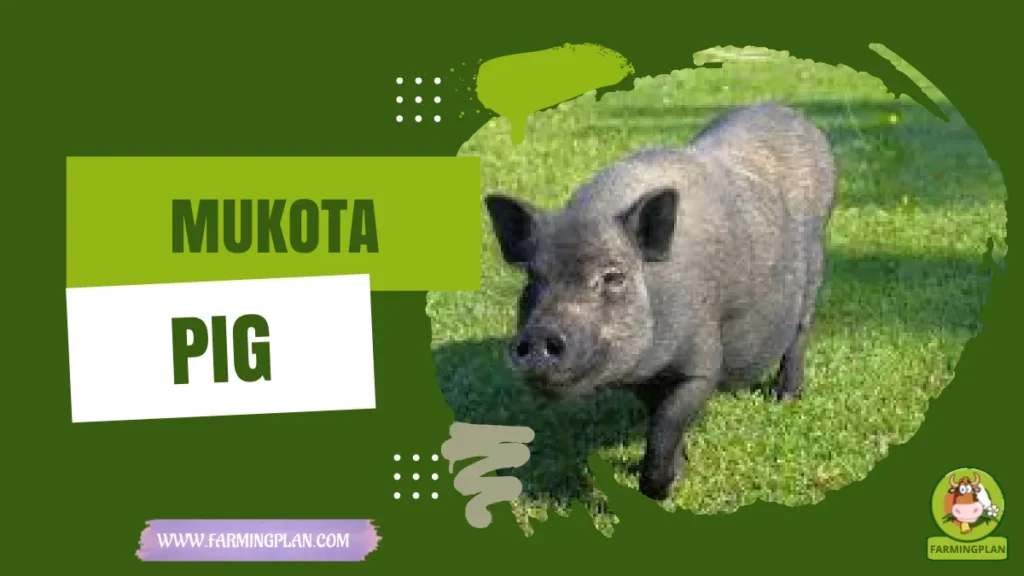Many say Highland Cattle are loved because they’re known as “hairy cows” or “highland coos.” Thanks to their recognizable shaggy hair and curved horns, these animals are well worth seeing and show that they are able to survive and adapt well. Originating from the rugged terrains of Scotland, Highland Cattle have thrived in harsh conditions, making them a favorite among breeders and hobbyists. I’ll use my personal experience to provide readers with useful advice and help them care for these animals, whether they are only starting or have a lot of experience.

History & Origin Of Highland Cattle
Highland Cattle trace their roots back over a thousand years to the Scottish Highlands and the Western Isles. These animals are believed to have descended from the ancient Bos taurus primigenius, the wild aurochs . Their ability to withstand the cold, wet, and windy conditions of their native land speaks volumes about their hardiness.

The first herd-book for Highland Cattle was published in 1885 by the Highland Cattle Society in Scotland . Interestingly, two distinct types were registered as a single breed: the smaller island type, usually black, and the larger mainland type, typically dun-colored. Anyone interested in cattle will find their past and lasting reputation very interesting.
Read More: Arado Cattle: Ultimate Guide to Profitable
Today, Highland Cattle are found worldwide, from North America to Australia, thanks to their adaptability and the growing interest in sustainable and heritage farming practices. Their rich history and enduring legacy make them a fascinating subject for any cattle enthusiast.
With their rugged beauty and gentle spirit, Highland Cattle remind us that strength and grace can thrive together in the wildest of landscapes.
Characteristics Of Highland Cattle
One of the most striking features of Highland Cattle is their long, wavy, and woolly coats. This double coat consists of an oily outer layer and a soft undercoat, providing excellent insulation against harsh weather . Coat colors vary widely, including red, yellow, black, dun, and silver, adding to their visual appeal.
Both males and females sport impressive horns that can span outward and upward, giving them a majestic appearance. Mature bulls can weigh up to 800 kg, while cows average around 500 kg . Despite their size, Highland Cattle are known for their manageable and calm demeanor.

Their physical attributes are not just for show; these features have evolved to help them survive in rugged environments. Their thick skin offers warmth in cold and wet weather and the horns let them find food and defend themselves. For farmers who value both the way something looks and how useful it is, this is their favorite type of utility vehicle.
Nature & Temperament Of Highland Cattle
Highland Cattle are renowned for their gentle and docile nature. They are social animals that thrive in herds, displaying strong maternal instincts and forming close bonds with their companions . This temperament makes them suitable for various farming setups, including family farms and educational petting zoos.
Read More: Asturian Mountain Cattle: Profit Farming
Their calm demeanor doesn’t mean they’re passive; Highland Cattle are intelligent and curious, often approaching humans with interest rather than fear. With this characteristic, dealing with all types of cattle requires little skill from beginners in farming.
Still, just like other animals, pet chickens need to be handled in a way that does not lose their confidence. Spending time socializing with them early and having regular interactions can make them even friendlier, bringing them more joy to work with every day
Food & Diet Of Highland Cattle
Feeding Highland Cattle is relatively simple, thanks to their ability to thrive on rough forage. They primarily graze on grasses, but during winter or in poor pastures, supplemental hay becomes essential. Their efficient digestion allows them to extract maximum nutrients from coarse vegetation .

If animals get only a little, a well-rounded dinner is important for their health and work. It’s helpful to introduce grains to pregnant or lactating cows, but giving them too much at once can cause digestive problems, so be sure to increase their feed slowly. Always ensure access to clean water, as hydration is vital for digestion and overall well-being.
There are mineral supplements with high selenium and copper that can stop common deficiencies in some areas. Reaching out to a veterinarian or livestock nutritionist regularly will help build a diet that is right for your herd.
Usage & Purpose
Highland Cattle are primarily raised for their high-quality beef, known for its leanness and rich flavor. Their meat is lower in cholesterol and fat compared to other breeds, making it a healthier choice for consumers . This premium product often commands higher prices in niche markets,
Beyond meat production, their striking appearance and gentle nature have made them popular in agritourism. Farms offering “cow cuddling” experiences or photo opportunities with these majestic animals attract visitors seeking unique interactions with livestock .
Read More: Afrikaner Cattle: A Unique Breed of Cattle
Also, because they are hardy and not high upkeep, they are suitable for conservation grazing. Such work helps control invasive species of plants and make sure there are open habitats which boost biodiversity.
Special Features
Highland Cattle possess several unique traits that set them apart from other breeds. These animals grow leaner than others with the same amount of nutrition, since their doubles coat supplies enough warmth. As a result, cattle do well in intense cold and still produce quality meat.
Their horns, present in both sexes, are not just ornamental; they serve practical purposes in foraging and defense. These sweeping horns also contribute to their iconic silhouette, making them easily recognizable and beloved by many.
Another notable feature is their longevity. Highland Cattle can live up to 20 years, with cows remaining productive for much of their lifespan. This extended productivity can be economically beneficial for farmers, reducing the frequency of herd replacement.
Health Issues & Prevention
Highland Cattle are usually tough, but they can still experience health problems. Many people are worried about infections caused by parasites, problems with the respiratory system and not getting sufficient minerals . Regular health checks and preventive measures are essential to maintain a healthy herd.
Keeping a regular deworming practice and giving pets a clean, dry shelter reduces several health problems. Regional disease risk should be discussed with a veterinarian, who would then suggest the proper vaccines. Monitoring for signs of illness, such as changes in appetite or behavior, allows for prompt intervention.
Nutrition plays a vital role in disease prevention. Ensuring a balanced diet with adequate minerals can bolster the immune system, reducing susceptibility to common ailments. Investing in proper care and management practices pays dividends in the long-term health and productivity of your herd.
Step-by-Step Farming Guide
Step 1: Preparing the Land
Before introducing Highland Cattle to your farm, assess and prepare the land. A minimum of 1.5 to 2 acres of grazing is necessary for each animal. Making sure there are no toxic plants and that water is free from contamination will help your animals stay healthy. You need to have a sturdy fence at least 4.5 feet tall to keep these powerful animals from roaming off your property.
Shelter is also crucial, especially in extreme weather conditions. Though Highland Cattle withstand many challenges well, providing some shelter improves their happiness and cuts down on their stress levels. It is important to often inspect the ground for sharp things or areas that might collapse to stop accidents.
Step 2: Acquiring Your Herd
When selecting Highland Cattle, source from reputable breeders who prioritize animal health and temperament. Look for animals with clear eyes, healthy coats, and good body condition. Request health records, including vaccination history and any previous illnesses.
Consider starting with a small herd to manage resources effectively and gain experience. Introducing new animals gradually allows for better monitoring and reduces the risk of overwhelming your facilities. Quarantine new arrivals for a period to ensure they are free from contagious diseases before integrating them with the existing herd.
FAQ
How much land do I need for Highland Cattle?
You’ll need about 1.5 to 2 acres per animal for adequate grazing. They’re great at foraging, but having enough space helps maintain pasture health and keeps them happy.
Are Highland Cattle good for beginners?
Absolutely. Their calm nature, low maintenance needs, and hardy constitution make them ideal for first-time farmers, pet owners, and hobbyists.
Can Highland Cattle be used for milk production?
Yes, but on a small scale. Highland Cows produce a modest amount of rich milk, making them more suited for personal use rather than commercial dairy farming.
How cold-tolerant are Highland Cattle?
Very! Their double-layered coat keeps them warm even in extreme winter conditions. They actually prefer colder climates and can thrive in intemperate regions.
Where can I buy Highland Cattle in the U.S.?
Check out the American Highland Cattle Association website, regional breeders, or cattle markets. Always go through a reputable breeder to ensure healthy, well-raised animals.
Conclusion
Highland Cattle are more than just Instagram-famous, fluffy cows, they’re a resilient, adaptable, and lovable breed with a rich history and plenty of practical benefits. Whether you’re a farmer looking for quality beef, a hobbyist wanting a low-maintenance herd, or an animal lover seeking a unique companion, these gentle giants check all the boxes. With the right care, setup, and a bit of patience, Highland Cattle can become a treasured part of your land and life. If you’ve ever dreamed of raising a herd with heart and horns, this is your sign to get started.


